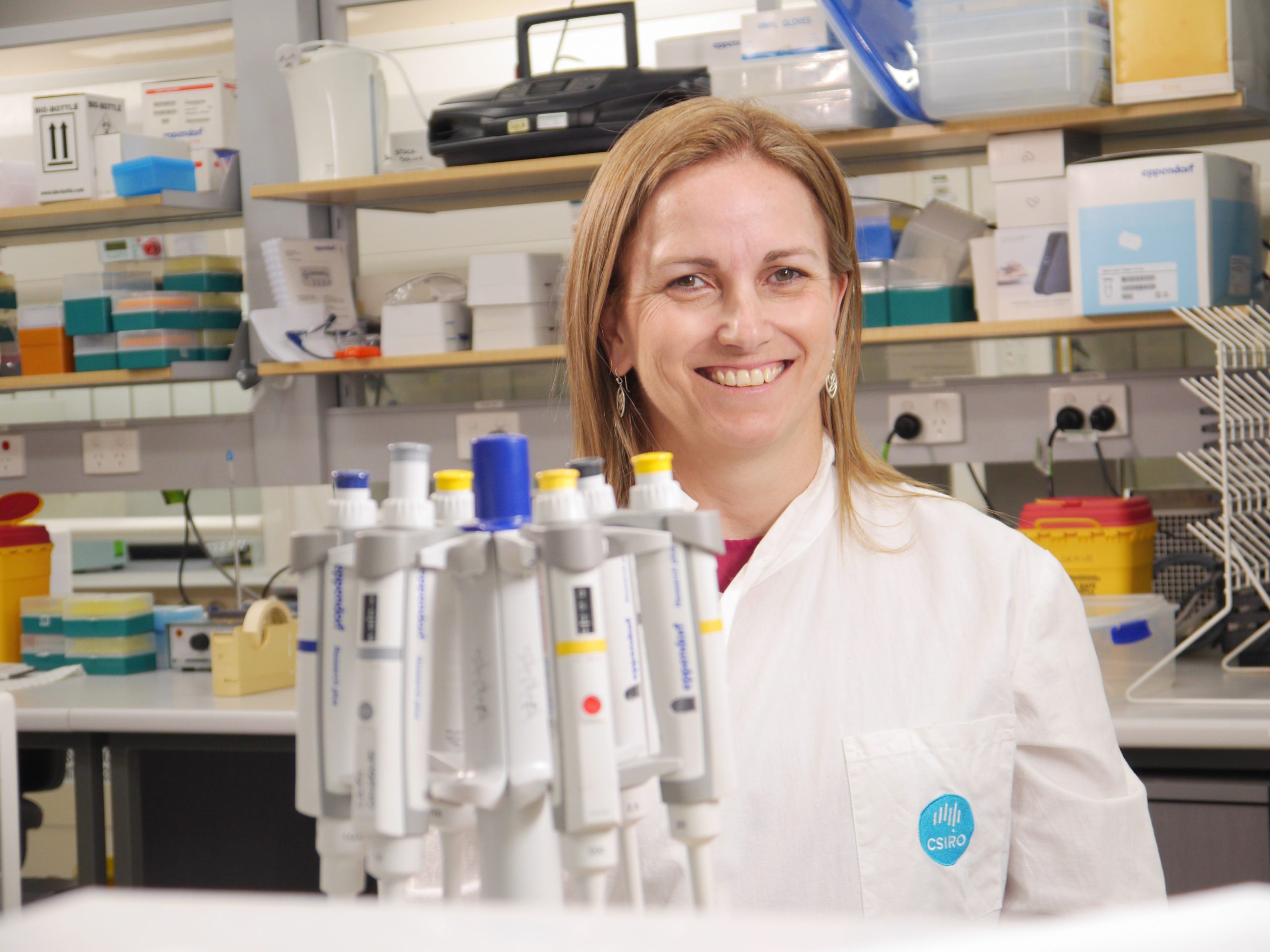Seeking maximum impact for the future of our food systems
Michelle Colgrave is on a mission to make food safer and better quality, in Australia and globally.

Michelle Colgrave is on a mission to make food safer and better quality, in Australia and globally.

In recent years she led CSIRO’s Future Protein Mission, looking at how to produce more protein options, more sustainability from more sources.
She has now taken up a new role in CSIRO, leading impact right across Agriculture and Food systems, with protein still at the top of her agenda.
“What we’re trying to understand is what are the proteins in any given system, how do they interact, and what can we infer about the biology of a system through knowing what those proteins are,” she says.
Her background is in proteomics, the study of proteins using mass spectrometry. But what is proteomics and how is this technique used?
“It’s essentially capturing a snapshot of any cell tissue or organism at a point in time.” The technique is highly transferable, Michelle says.
“I do everything from measuring peptides involved in plant defence through to defining grain quality or food safety by applying the tools we have to these very different challenges. This science is vital for the future of food safety”.

One of the key ways we are seeing the practical application of this science is in food labelling, which Michelle says is vital in terms of consumer trust.
“I support food manufacturers to address accuracy in labelling and beyond that support governments with advice on establishing food standards for both existing and novel foods. This is vital for the changing nature of our diets.”
Lately those working with Michelle have been looking at how protein can play a role with peoples’ changing dietary patterns.
“For example, we’re seeing what we call the rise of the ‘flexitarian’ – those who are looking to complement their red meat intake with alternatives, including new sources of plant protein. So we’re doing a lot of work around that and understanding what are the next potential plant proteins that could be used, such as pulses like lupin, and understanding their nutritional value.”
One of Michelle’s recent PhD graduates Dr Arineh Tahmasian has been studying lupin for its role as a superfood, but whose uptake has been hindered by its potential to induce food allergy in a small proportion of the population.
“We need a deeper understanding of which proteins are involved in food allergies and the role they play in the plant”, she said.
Michelle says many researchers use proteomics to understand human health, but she has focused on agriculture and food.
“We’ve applied it to agriculture in the sense of ‘can we make a plant that produces something that’s going to be beneficial?’ An example is we’ve made a canola variety, through genetic modification (GM), that produces omega-3 oils.”
These oils have many benefits for human health, including for heart and brain development, but have traditionally been harvested from plankton-eating fish.
If we’re going to harvest all of that fish oil from the ocean, then that’s unsustainable. We’re providing the same nutrition, but doing it in a more sustainable way, because for every 10,000kg of fish that need to be harvested, we can grow a hectare of this canola. My role was to use proteomics for the safety assessment required for genetically modified crops or foods, to demonstrate that it’s going to be safe for consumption and also safe for the environment.
Michelle is aware that there is still uncertainty from consumers around the use of GM technologies, but the way she sees it, they can be considered as safe as conventional breeding programs.
“I can cross two different varieties of wheat to produce a new variety. As long as I’ve just crossed them, then that’s not GM and there’s no requirement for safety assessment.
On the other hand, the requirements are extensive for GM products to be proved safe from both environmental and health perspectives, so you could argue that they’re even safer.”
Our future depends on our ability to change and evolve and gene technologies will inevitably have to play a part in that.
Professor Colgrave is particularly renowned for her work with gluten, in particular determining what is safe for coeliacs and those with gluten intolerance.
“It could be the gluten itself, or it could be the other proteins that exist in the gluten-containing grains that are interfering with your metabolism,” she says.
Her research helped CSIRO develop an ultra-low gluten barley variety called Kebari.
“Farmers with a grain like Kebari can grow that for a premium price because it’s addressing this niche market,” she says. “In terms of consumers, it’s more about ensuring that the food that they’re eating is safe. They can have some confidence that when they see a ‘gluten-free’ label on a packet, they’re not actually going to be sick. And that can happen at the moment.”

Michelle finds it easy to explain why some plant proteins make some people sick. “Plants can’t run away. So what do they do? They make all these defence molecules to make insects feel a bit sick when they eat them. We then go and make products out of them. So it’s not surprising that sometimes, we also get sick or experience these gastrointestinal complaints, just like the insects!”
And speaking of insects, that’s another area being closely looked at for future protein needs – everything from black soldier flies to crickets. Michelle is keen to understand whether insects are a way of feeding our population, or at least our pets, but says we must also consider any food allergies associated with novel foods.
Michelle Colgrave is a chief investigator representing Edith Cowan University in the Australian Research Council Centre of Excellence for Innovations in Peptide and Protein Science. She is the editor of the book “Proteomics in Food Science: From Farm to Fork” looking at the application of mass spectrometry (MS) and proteomics to food science and within agricultural research communities and her work applying MS techniques in the quantification of gluten (hordeins in barley; gliadins and glutenins in wheat), and has been recognised with multiple awards including the ICM Agrifood Award (Australian Academy of Technology and Engineering (ATSE) Innovation and Excellence Awards).
From her high school days at Batemans Bay in NSW, Michelle has been driven to use science to make a difference. “From there, I went to an agricultural high school in Sydney for my last two years of school, so that’s where the merge of agriculture and science came into play.” Michelle studied science at Wollongong University, mentored and inspired by Professor Margaret Sheil, Australia’s first female professor of chemistry. She ended up completing a PhD on bioanalytical mass spectrometry under Professor Sheil’s supervision. She is now using that work to make a difference on a global scale.
This is an edited version of the post Michelle Colgrave: Protein Detective, which was published on The Brilliant on 19 November 2020.